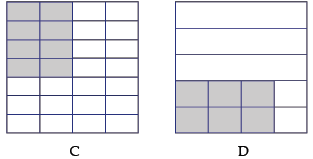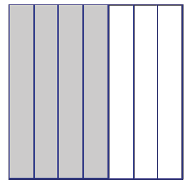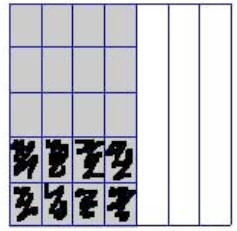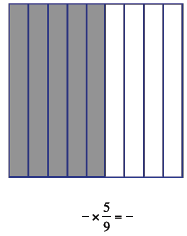- Home
- INTERMEDIATE ALGEBRA
- Course Syllabus for Algebra I
- Mid-Plains Community College
- FRACTION OF A WHOLE NUMBER
- Systems of Linear Equations
- MATH FIELD DAY
- Course Outline for Finite Mathematics
- Calculus
- Algebra Final Examination
- Math 310 Exam #2
- Review of Trigonometric Functions
- Math 118 Practice test
- Precalculus Review
- Section 12
- Literal Equations
- Calculus Term Definitions
- Math 327A Exercise 2
- Public Key Algorithms II
- Maximizing Triangle Area
- Precalculus I Review for Midterm
- REVIEW OF A FIRST COURSE IN LINEAR ALGEBRA
- Math 6310 Homework 5
- Some Proofs of the Existence of Irrational Numbers
- ALGEBRAIC PROPERTIES OF MATRIX OPERATIONS
- Math 142 - Chapter 2 Lecture Notes
- Math 112 syllabus
- Math 371 Problem Set
- Complex Numbers,Complex Functions and Contour Integrals
- APPLICATIONS OF LINEAR EQUATIONS
- Week 4 Math
- Fractions
- Investigating Liner Equations Using Graphing Calculator
- MATH 23 FINAL EXAM REVIEW
- Algebra 1
- PYTHAGOREAN THEOREM AND DISTANCE FORMULA
- Georgia Performance Standards Framework for Mathematics - Grade 6
- Intermediate Algebra
- Introduction to Fractions
- FACTORINGS OF QUADRATIC FUNCTIONS
- Elementary Algebra Syllabus
- Description of Mathematics
- Integration Review Solutions
- College Algebra - Applications
- A Tip Sheet on GREATEST COMMON FACTOR
- Syllabus for Elementary Algebra
- College Algebra II and Analytic Geometry
- Functions
- BASIC MATHEMATICS
- Quadratic Equations
- Language Arts, Math, Science, Social Studies, Char
- Fractions and Decimals
- ON SOLUTIONS OF LINEAR EQUATIONS
- Math 35 Practice Final
- Solving Equations
- Introduction to Symbolic Computation
- Course Syllabus for Math 935
- Fractions
- Fabulous Fractions
- Archimedean Property and Distribution of Q in R
- Algebra for Calculus
- Math112 Practice Test #2
- College Algebra and Trigonometry
- ALGEBRA 1A TASKS
- Description of Mathematics
- Simplifying Expressions
- Imaginary and Complex Numbers
- Building and Teaching a Math Enhancement
- Math Problems
- Algebra of Matrices Systems of Linear Equations
- Survey of Algebra
- Approximation of irrational numbers
- More about Quadratic Functions
- Long Division
- Algebraic Properties of Matrix Operation
- MATH 101 Intermediate Algebra
- Rational Number Project
- Departmental Syllabus for Finite Mathematics
- WRITTEN HOMEWORK ASSIGNMENT
- Description of Mathematics
- Rationalize Denominators
- Math Proficiency Placement Exam
- linear Equations
- Description of Mathematics & Statistics
- Systems of Linear Equations
- Algebraic Thinking
- Study Sheets - Decimals
- An Overview of Babylonian Mathematics
- Mathematics 115 - College Algebra
- Complex Numbers,Complex Functions and Contour Integrals
- Growing Circles
- Algebra II Course Curriculum
- The Natural Logarithmic Function: Integration
- Rational Expressions
- QUANTITATIVE METHODS
- Basic Facts about Rational Funct
- Statistics
- MAT 1033 FINAL WORKSHOP REVIEW
- Measurements Significant figures
- Pre-Calculus 1
- Compositions and Inverses of Functions
Rational Number Project
| Fraction Operations and Initial Decimal Ideas Lesson 22: Overview |
Materials • Patty paper • Two color pencils or markers • Student sheets A and B • Transparencies 1 and 2 |
| Students use patty paper (an area model) to
multiply fractions. Students develop the algorithm for multiplying fractions by noticing patterns related to the patty paper model. |
| Teaching Actions
Warm Up
|
Comments The
students should be able to do
|
||||||||
| Teaching Actions
Large Group Introduction Kathy’s Cake
2. Ask the students to think about how much cake Kathy 3. Explain that Kathy wants to eat two-fifths of the |
Comments | ||||||||
|
There is four-sevenths of a cake remaining. The student may or may not draw a
|
|||||||||
| Teaching Actions
5. Ask the students to explain what fraction of the whole
Small Group/Partner Work • How did the picture change when you |
Comments | ||||||||
| Teaching Actions
o Where is a 2 by 1 rectangle in your
10. Write a 3 in the denominator of the first fraction in
the
Ask the students to explain why multiplying 9 by 3 Ask: What number will we write in the denominator Ask: What does the 27 represent” (The number of 11. Write a 2 in the numerator of the multiplication
Ask: What number should we write in the numerator |
Comments | ||||||||
|
Students have trouble explaining why the multiplication algorithm works. The goal of the student pages and the wrap up is to help them verbalize why the algorithm works using the patty paper model. Students should be able to explain
|
|||||||||
| Teaching Actions
Ask: What does the 10 represent? (The 10 pieces
multiplication algorithm Translations: |
Comments | ||||||||







 ). Ask a few students
how they
). Ask a few students
how they
 of
of
 ?
? colored. Show transparency 2.
colored. Show transparency 2.


